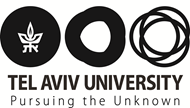

Dr. Yoav Ram
Research work
We study evolutionary biology, ecology, and cultural evolution, using mathematical, computational, statistical, and machine-learning models and collaborations with empirical biologists. Our interests span a wide range of biological systems, from viruses, bacteria, and fungi to whales and humans
Areas of interest & scientific knowledge
Behavioral Neuroscience
Computational & Theoretical Neuroscience
Selected Publications
- Macdonald JC, Blanco-Portillo J, Feldman MW, Ram Y. 2024. Cultural transmission, networks, and clusters among Austronesian-speaking peoples. Evolutionary Human Sciences. DOI:10.1017/ehs.2024.45
- Galke L, Ram Y, Raviv L. 2024. What makes a language easy to deep-learn? Deep neural networks and humans similarly benefit from compositional structure. Nature Communications, Accepted
- Egozi S, Ram Y. 2024. Prestige bias in cultural evolutionary dynamics. Royal Society Open Science. DOI:10.1098/rsos.230650
- Shvartzman B, Ram Y. 2024. Self-replicating artificial neural networks give rise to universal evolutionary dynamics. PLOS Computational Biology, DOI:10.1371/journal.pcbi.1012004
- Borofsky T, Feldman MW, Ram Y. 2024. Cultural transmission, competition for prey, and the evolution of cooperative hunting. Theoretical Population Biology, DOI:10.1016/j.tpb.2023.12.005
- Denton KK, Ram Y, Feldman MW. 2023. Conditions that favor cumulative cultural evolution. Philosophical Transactions B. DOI:10.1098/rstb.2021.0400
- Kolodny O, Feldman MW, Lotem A, Ram Y. 2022. Differential application of cultural practices at the family and individual levels may alter heritability estimates. Behavioral and Brain Sciences. DOI:10.1017/S0140525X21001576
- Galke L, Ram Y, Raviv L. 2022. Emergent Communication for Understanding Human Language Evolution: What’s Missing? Emergent Communication Workshop at ICLR 2022. DOI:10.48550/arXiv.2204.10590
- Cohen D, Lewin-Epstein O, Feldman MW, Ram Y. 2021. Non-Vertical Cultural Transmission, Assortment, and the Evolution of Cooperation. Proceedings of the Royal Society B. DOI:10.1098/rspb.2020.3162

